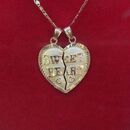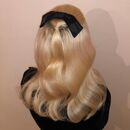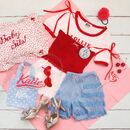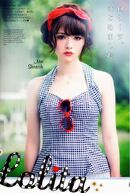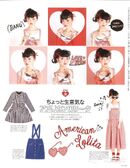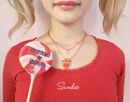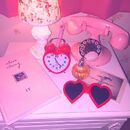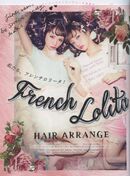No edit summary Tag: Visual edit |
m (adding related aesthetics) |
||
| Line 12: | Line 12: | ||
|key_motifs = Youth, adolescence, freedom, vintage |
|key_motifs = Youth, adolescence, freedom, vintage |
||
|key_colours = Red, white, pink, baby blue |
|key_colours = Red, white, pink, baby blue |
||
| + | |related_media=Lolita (1997, 1962) |
||
| − | |related_media=Lolita (1997, 1962)|related_aesthetics=[[Babygirl]]<br>[[Dark Nymphet]]<br>[[Kinderwhore]]<br>[[Larme Kei]]<br>[[Softie]]<br>[[Waif]]<br>[[Winter Fairy Coquette]]|caption1="Could be kissin' my fruit punch lips in the bright sunshine / 'cause I like you quite a lot, everything you got / don't you know?" -Lana del Rey}}''For the kawaii Japanese fashion unaffiliated with the novel, see [[Lolita]]. For the 2020 "off duty model heroin chic ballet student" aesthetic, see [[Waif]].'' |
||
| + | |related_aesthetics=[[Babygirl]]<br>[[Dark Nymphet]]<br>[[Key West Kitten]]<br>[[Kinderwhore]]<br>[[Larme Kei]]<br>[[Lolita]]<br>[[Softie]]<br>[[Waif]]<br>[[Winter Fairy Coquette]] |
||
| + | |caption1="Could be kissin' my fruit punch lips in the bright sunshine / 'cause I like you quite a lot, everything you got / don't you know?" -Lana del Rey |
||
| + | }} |
||
| + | ''For the kawaii Japanese fashion unaffiliated with the novel, see [[Lolita]]. For the 2020 "off duty model heroin chic ballet student" aesthetic, see [[Waif]].'' |
||
'''Nymphet''', also sometimes refered to as Coquette, is an aesthetic based on a character trope originated by Vladimir Nabokov - "Lolita", published in 1955 and its movie adaptations from 1962 and 1997. Nymphet is an illusion created in the mind of Humbert Humbert, the (unreliable) main character and narrator of both the films and book. For the term, it is used by Humbert as a way to justify his predatory actions towards Dolores Haze, his victim. |
'''Nymphet''', also sometimes refered to as Coquette, is an aesthetic based on a character trope originated by Vladimir Nabokov - "Lolita", published in 1955 and its movie adaptations from 1962 and 1997. Nymphet is an illusion created in the mind of Humbert Humbert, the (unreliable) main character and narrator of both the films and book. For the term, it is used by Humbert as a way to justify his predatory actions towards Dolores Haze, his victim. |
||
Revision as of 03:27, 18 May 2022
This is a sensitive topic. Many would argue that buying into this aesthetic and subculture could be abused for the romanticization of pedophilia.
It's still necessary to acknowledge even harmful influences on modern visual culture, but we at the Aesthetics Wiki DO NOT condone the romanticization of pedophilia and child abuse. Continue at your own risk.
For the kawaii Japanese fashion unaffiliated with the novel, see Lolita. For the 2020 "off duty model heroin chic ballet student" aesthetic, see Waif.
Nymphet, also sometimes refered to as Coquette, is an aesthetic based on a character trope originated by Vladimir Nabokov - "Lolita", published in 1955 and its movie adaptations from 1962 and 1997. Nymphet is an illusion created in the mind of Humbert Humbert, the (unreliable) main character and narrator of both the films and book. For the term, it is used by Humbert as a way to justify his predatory actions towards Dolores Haze, his victim.
Through a series of misunderstandings, a Lolita or nymphet was thought to be a young woman who purposefully pursues and manipulates older men into sexual situations, ignoring Nabokov's intentions in writing. This type of teenaged girl depicted is always sexually attractive and seduces men via plausibly deniably flirtations, hence Humbert's use of "coquette." These girls (in fiction, reality, and in these girls' fantasies) do so because of a genuine sexual/romantic attraction for older men, expressing power over a man, receiving gifts from him, being admired for being attractive, et cetera.
At around 2014, on tumblr, young women took on this trope for themselves, as it was an aesthetic surrounding femininity, tragedy, and burgeoning sexuality. Contemporary pop culture involved a lot of content relating to teenaged girlhood and the drama/romanticism of growing up quickly and being involved with risqué behavior (see Media section.) Lana del Rey and her album Born to Die is a main inspiration in the aesthetic.
However, other young women are also against the sexualization Nymphet and have created a community, often called NoKinkNymphet, that rejects the darkness of the character type and instead simply appreciates the aesthetic.
Philosophy
This section is under construction
The Nymphet aesthetic is a synthesis of the two "ideals" of femininity and stages of life: girlhood and sexual maturity. Rather than choosing to be childish and innocent or mature and sexy, this aesthetic combines the two so young women can both enjoy these symbols of youth while still enjoying the new marks of adulthood (romantic relationships, sex, alcohol, etc.)
Many young women in the Nymphet use the aesthetic and community to explore their sexuality. Teenaged girls can be genuinely attracted to middle-aged men and fantasize about "being" Dolores, except with them being consensually in the relationship. Their attraction often overlaps with BDSM and DDLG, as the difference in ages is often an expression of sexual submission. This desire for an age-gap relationship is not discussed in the average teen-sphere or is told through the lens of the man, rather than the woman, so this community fills this need.
History
This section is under construction
Lolita by Vladimir Nabokov was published in 1955 to much controversy; some publications demeaned it and the novel was banned in multiple countries. The book's status as a classic required different publishers to find new ways of conveying the premise of the novel. Shari L. Savage's Lolita: Genealogy of a Cover Girl, an examination of book cover design, lists the common visuals that the designers use, the vast majority of which overlap with visuals that nymphet aesthetic bloggers reblog today.
In 1962, Stanley Kubrick adapted the book for film. On the film poster are the two most iconic symbols of the character to this day: heart-shaped sunglasses and a red lollipop.
The 1997 adaptation by Adrian Lyne provided inspiration for most, if not all, fashion points. Milkmaid braids, sailor collars, retro swimsuits, and the color palette are all clear connections between the modern nymphet community's fashion style and the film.
The work that arguably introduced young women to the archetype and aesthetic of Nymphet was Lana del Rey's album Born to Die (2012). She references Nabokov's prose, having sex with older men, visuals from the films, being sexually attractive at a young age, and having a party lifestyle[1].
In the same year, Marina and the Diamonds released Electra Heart, which explores feminine archetypes, sexuality, teenage girlhood, and the carefree yet vulnerable personality type that those with nymphet aesthetics can relate to.[2] These two albums being released at around the same time made the two artists' listeners aware of, and yearn for, this sort of persona.
Tumblr was the de facto website for this subculture to gather.
The culture diminished heavily during the Tumblr Purge in December 2018, which specifically happened because of the presence of child pornography on the site[3]. Because some Nymphet bloggers had NSFW gifs and discussion, most users in the aesthetic had their blogs taken away by the administrators. In addition, tags for lolita and nymphet showed no results, causing the community to go by many other names, such as coquette, doelette, nympet, loleeta, etc.
Visuals
This page is under construction
Nymphet visuals focus heavily on adolescence and the gateway between childhood and adulthood.
The most prominent visuals are the ones associated with the film and cover art of the books: the heart-shaped sunglasses and red lollipop.
1950s teenaged girl culture is a large influence on the community. The trends and iconography of that time include saddle shoes, shiny red vintage cars, and diner milkshakes, which are some of the most common photo subjects in the aesthetic. This is because the novel itself takes place in the 1950s, with the film adaptations retaining the aesthetic of the time period.
Cherries, specifically maraschino cherries, are one of the most iconic images associated with the nymphet aesthetic due to their connotations with innocent femininity, nostalgia, and sexuality. Its symbolic meaning can be traced back to 17th century literature, and its use in American pop music, slang, and party tricks (tying a knot in the mouth) cemented it as representative of adolescent sexuality.[4]
Imagery associated with the mouth in general is very popular. In the novel, Humbert Humbert often fixates on Dolores's mouth in a sexual connotation. The cover for the Knopf edition of Lolita also features a close-up of the corner of a girl's mouth. Lips, blowing bubblegum, lip cosmetics, and images of biting down on food or flowers is thus one of the most featured things in moodboards and blogs.
Media
Movies
- Lolita (1962), (1997)
- Leon the Professional (1994)
- American Beauty (1999)
- The Crush (1993)
- Pretty Baby (1978)
- Breezy (1973)
- Hick (2011)
- Copenhagen (2014)
- The Diary of a Teenage Girl (2015)
- Jeune et Jolie (2013)
- The Lover (1992)
Music
- "Lolita", "Put me in a movie", "Off to the Races" - Lana del Rey
- "My Heart Belongs to Daddy" - Marilyn Monroe
- "Guys My Age" - Hey Violet
- "You're Sixteen" - Ringo Starr
- "Lolita" - Knee High Fox
- "Moi... Lolita" - Alizee
- "Girls In Their Summer Clothes" - Bruce Springsteen
Fashion
Note: This fashion should not be confused with Lolita fashion, a Japanese street fashion that is heavily inspired by Rococo and Victorian era clothing, which has entirely different rules and mentality behind it, and is no way related to Nabokov's "Lolita", despite sharing its name.
Common patterns involved in this aesthetic are gingham, plaid, cherry print, and swiss dot. Their associations with vintage fashion and schoolgirl life is explained in the visuals section.
Face and Makeup
- Clean, dewy skin
- Rosy cheeks
- Highlighter to achieve soft glow
- Pastel and shimmery eyeshadows
- Long eyelashes
- Red lipstick
- Glittery and sheer glosses in pink, red or peachy tones
Hair
- Long natural hair
- Braids
- Soft waves and curls
- Milkmaid braids
- Pigtails
- "Donut"/looped braids
Clothing
- Sundresses
- Rompers
- Tennis skirts
- High-waisted shorts
- Cropped tops
- Plaid/floral/cherry patterns
- Thigh-high and knee-high socks
- Mary Jane shoes
- Sandals
- Red/white/pink/baby blue clothes
- Bralettes
- Preppy clothes
- Clothing with lace
Accessories
- Heart-shaped sunglasses
- Ribbons/bows/hairbands/cute hair accessories in general
- Cute, soft necklaces
- Delicate chokers
- Small earrings
- Lollipops
- Vintage backpacks
- Stockings and cute socks
- Bubblegum and candies
- Cherries or strawberries
Activities
- Baking or cooking for one's friends or family
- Chewing bubblegum
- Dancing, particularly in a modern or lyrical style
- Eating fruits and certain sweets
- Fashion or shopping at thrift stores
- Going to parties
- Maintaining a carefree and childlike demeanor
- Painting one's nails in bright, girlish colors
- Risque party games such as spin-the-bottle or seven minutes in heaven (played straight)
- Rollerskating, running or riding a bicycle
- Writing physical letters with paper and pen
Subgenres
Faunlet
Faunlet is the male equivalent to a Nymphet. The main inspirations for the aesthetic are Tadzio from the 1971 adaptation of Death in Venice, Leonardo DiCaprio and vintage boys clothes, especially sailor clothes and woodland themes and colours.
The Faunlet aesthetic does seem to have more of a following in the LGBTQ community than in heterosexual circles. Straight members of the Faunlet community do exist, though it's nowhere near as common.
Japanese Nymphet
This section is under construction
Japanese Nymphet differs from the rest of the article because rather than it being a community and quasi-identity, the Nymphet aesthetic there is exclusively based on fashion that is based on the costume design of the two Lolita movies.
Criticism
This section is under construction
Resources
External links to help get a better understanding of this aesthetic.
Playlists
YouTube Channels
Gallery (American Version)
| This page is a candidate for deletion.
Remember to check what links here and the page history before deletion. |
Gallery (Japanese)
References
- ↑ The songs on Lana del Rey's album Born to Die reference "heart-shaped sunglasses" ("Diet Mountain Dew"), "light of my life, fire of my loins" ("Off to the Races"), "table dancing at the local dive" ("This Is What Makes Us Girls"). More lyrical analysis can be found here. https://genius.com/albums/Lana-del-rey/Born-to-die
- ↑ Bubblegum Bitch, Primadonna Girl, Homewrecker, and Teen Idle most prominently display this.https://genius.com/albums/Marina/Electra-heart
- ↑ https://www.forbes.com/sites/masonsands/2018/12/20/tumblocalypse-where-tumblr-and-its-users-are-headed-after-the-ban/?sh=3295fe170207
- ↑ https://www.vice.com/en/article/bmwwam/history-why-cherries-are-so-sexual

